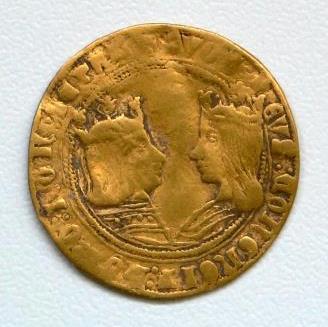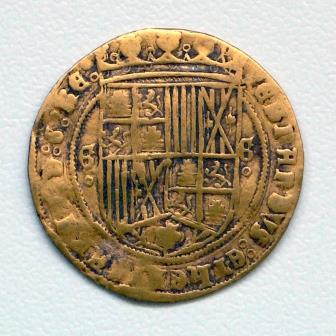A gold coin in Tabaksvest
The skeletons were found during an archaeological survey of the playground of the former Mère-Jeanne institute. There were not that many signs that pointed to an emotional farewell. On the contrary even, the skeletons were found in various orientations and many of them were face down. This probably means that they were buried quickly and without much respect. Nor were the bodied placed in coffins. They were probably wrapped in linen shrouds. Only two skeletons came with gifts for the afterlife. A medallion and tiny cross were found one skeleton. A gold coin was found in between the ribs of the youngest woman.
The coin dates from the early sixteenth century and had been minted in Granada. It was an “excellente” or “ducado”, depicting the Spanish king and queen, Ferdinand and Isabella on one side and the coat of arms of three kingdoms (Aragon, Castile and Leon) on the other. The coin also had a Latin inscription “”quod deus conjuget homo non sep.” (What God has joined, let not man separate), referring to Ferdinand's efforts to unite Spain. Research has shown that the coin was probably in use for at least fifty years. We can therefore deduce that the burial took place in the third quarter of the sixteenth century. The gift of a gold coin to the young woman can be seen as an attempt to add personality to the anonymous burial.


